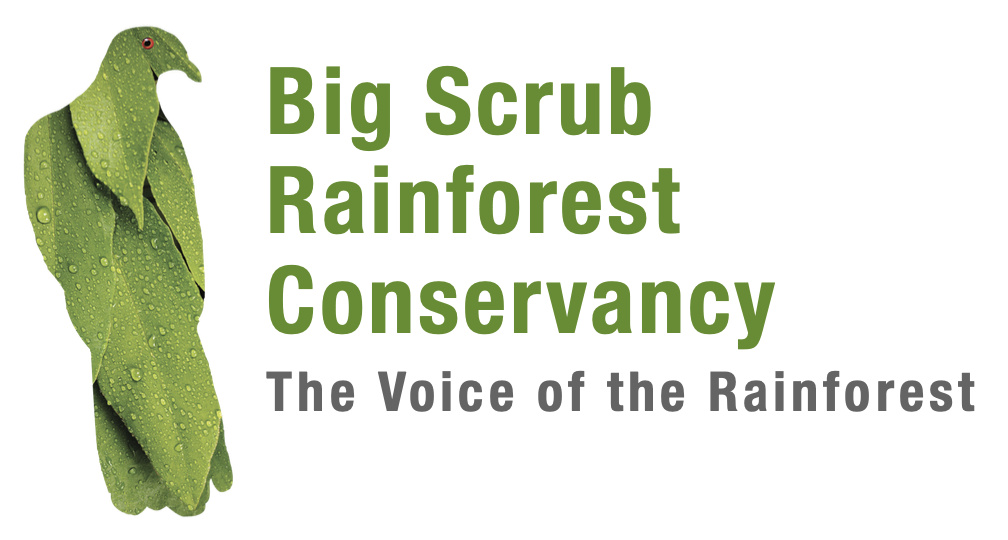One of the amazing species that can be found in the Big Scrub is Fleay’s barred frog (Mixophyes fleayi). The only place in the world where the frogs are found is in northern NSW and across the border into southeast Queensland and these frogs are listed as an endangered species. EnviTE environment have received $100,000 from NSW Environmental Trust to restore the frog’s habitat in the Terania Creek area of Nightcap National Park over three years.
DESCRIPTION
Fleay’s barred frogs are moderate to large frogs up to 90 mm long. They are medium to pale brown above, with obscure darker brown blotches. The iris is silver-blue in the upper half and brown in the lower half. This frog is distinguishable from other barred frog species by the narrow barring across the limbs, blotches on the upper lip and flank, and distinctive eye colour. The call is either a short “op..op..op” or longer “a.a.a.a.ah”.
DISTRIBUTION
The frog has a restricted distribution on the eastern side of the ranges in southeast Queensland (south from Conondale ranges) and northeast NSW. Recent records in NSW are from Nightcap National Park, Border Ranges National Park, Mt. Warning National Park, Tooloom National Park and Yabbra National Park.
SAVING FLEAY’S BARRED FROG
Dr David Newell from Southern Cross University said “Threats to Fleay’s barred frog include changes to breeding habitat by infestation with mistweed. The species breeds in the warmer months in gravely streams in rainforest. They make a nest in shallow running water between pools in wide flat sections of stream. Eggs are deposited in a shallow excavation in the stream bed or pasted directly onto bed rock.” Mistweed clogs up the gravel pools and reduces suitable breeding habitat.”
Dan Cox, Envite Environment restoration ecologist said “NSW Environmental Trust funded bush regenerators are hand weeding mistflower and controlling other weeds that degrade Fleay’s barred frog habitat in the Terania Creek area of Nightcap National Park.”
Bush regenerator Darren Bailey said “This work is a joy. We are helping save an amazing species from extinction while working our way up beautiful creeks to waterfalls in some of the most significant rainforest in the world.” To date our team of bush regenerators have systematically controlled weeds across approximately 32 hectares of Fleay’s barred frog habitat.”
Darren continued “We only work in the cooler months so that there is no disturbance to frog breeding. We manually remove weeds without using herbicide to ensure no negative impacts on frogs. We also follow hygiene protocols to ensure that there is no spread of chytrid fungus, which is know to be a threat to frogs.
Dr Newell said “Other threats to Fleay’s barred frog include clearing of habitat, sedimentation in creeks from upstream activities, cattle access and forestry. Cane toads compete for food and habitat and may predate on young frogs.”
Kirralee Donavan said “Landholders who live near Nightcap National Park may have the species on their property. They can assist with improving the future for Fleay’s barred frogs by reducing cane toad numbers and hand control of mistweed around streams.”
For more information contact Kirralee Donavan at Envite Environment on 0266272800 or kirraleed@envite.org.au


